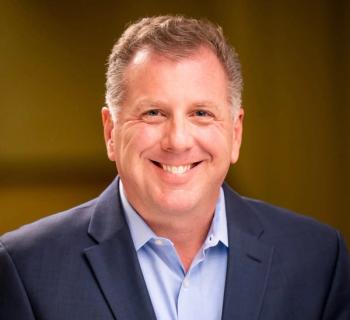
Women in healthcare looking to grow should ‘take risks’ | Lessons for Leaders
WellSpan Health CEO Roxanna Gapstur says women shouldn’t hold themselves back from challenging positions.
Some women who are looking to move into healthcare leadership roles don’t pursue interesting jobs due to self-doubt, Roxanna Gapstur says.
Gapstur is the president and CEO of
In a recent interview with Chief Healthcare Executive®, Gapstur offered her perspective for women aiming for leadership roles.
“Take risks. That's my advice. My advice is don't hold yourself back,” she says.
“Usually it's our own leadership insecurities that hold us back, our own leadership issues,” Gapstur says. “So leadership is an inward journey. You really need to be self-reflective and think about who you are as a person in order to be able to help other people. And so I say, take risks because I think that's an area that women struggle with sometimes.”
Some women shy away from throwing their hat in the ring for a given job because they may lack a few of the traits sought for the post, even if they have most of the required skills and are eminently qualified. Gapstur also says she thinks women stress more than men about having the qualifications for a leadership position.
“I would say men are probably more assertive about putting themselves forward for roles,” she says. “Women tend to be a little bit harder on themselves in general around needing the experience.”
Some of that relates to the idea of
At WellSpan, women hold a number of top leadership roles, and Gapstur says that’s also because the system is working to ensure its application pool is diverse.
“That's sort of a first step, and that means diversity in lots of different ways,” she says. “But we also try to, through our leadership development programs internally, make sure that we have a balanced cohort of men and women and people of color in our leadership cohorts, so that we're providing opportunity for everyone who might be a high potential leader to move into those positions.”
Gapstur also points to the value of mentors who are backing young leaders, and she says it’s important to offer those opportunities for “stretch assignments.”
“I think when most of us were coming up in our own leadership journeys, having mentors and sponsors was a really important part of how you advance as a woman in an organization,” she says.
“We're pretty conscientious about how we assign big, cross-functional projects across the organization, so that we're giving people the opportunity to learn outside of their traditional lane,” she adds. “And then of course, the more diverse and the more experience that you have in various cross-functional teams, the more valuable you become as a leader, especially in the complex healthcare environment that we're all in today.”
Gapstur adds that leaders shouldn’t be afraid to take a position that may be a lateral move, if it offers the chance to develop new skills or learn about a different part of the organization.
Healthcare organizations also should consider offering women leaders who have high potential added flexibility in their schedules or where they work, especially if they have young children.
“I think it is really important to offer that flexibility,” Gapstur says. “And if you have a high potential leader who is a woman and they need flexibility like that, it doesn't mean that they can't contribute in other ways. And we actually have some women who are working remotely and hybrid for us right now, some who are working directly with me.”
Gapstur also offers encouragement for women who may choose to pass up some career opportunities because they want to spend more time with their kids while they are young. Putting some career aspirations on hold doesn’t mean the end to leadership possibilities, she says.
A mother of four daughters, she points to her own life experience. After having her second daughter, Gapstur says she quit her job and stayed home for three years.
“I did that because I really wanted to be with the girls and I'm so glad I did that now,” Gapstur says. “But at the time, I was a leader, I was a manager and I remember thinking, ‘Well, I'm just never going to reach my career goals. But you know what, that's okay because I need to do this for my family.’
“And it actually was fine, as you can see,” she says. “I'm the CEO now. So it didn't hold me back.”








































